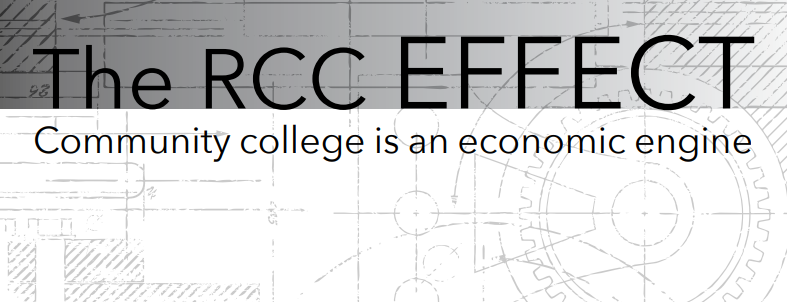
Rogue Community College is an economic engine for Southern Oregon that generates more than $239 million annually for the region’s economy, according to an economic impact study released in 2017.
The analysis by Economic Modeling Specialists International, or EMSI, of Moscow, Idaho, examined data from fiscal year 2015–16 to calculate the impact of RCC’s operations and student spending, as well as the higher earnings of alumni who entered the regional workforce with new skills after studying at RCC.
The study found that RCC has a significant positive impact on the region’s economy, with a high return on investment for its major stakeholder groups: students, taxpayers and society. RCC’s overall impact on the local business community amounts to $239.4 million in added income, the equivalent of supporting 4,500 jobs.
In fiscal year 2015–16, RCC employed 727 part- and full-time employees, with a payroll of $42 million, much of which was spent in the region to purchase groceries, clothing and other household goods and services. The college itself is a large-scale buyer of goods and services, spending another $26.5 million to cover expenses for facilities, supplies and professional services.
RCC students also have a significant economic impact. In the 2016–17 academic year, RCC provided its students with $21.5 million in financial aid, and RCC Veterans Services certified a net of $5.4 million in veterans’ educational benefits, according to RCC Financial Aid Office data. The EMSI study estimates that students in 2015–16 spent $28.4 million on rent, transportation, and groceries and other household expenses, with an estimated 83 percent of those dollars staying in the region.
Wages tend to increase as students attain higher levels of education.
At the midpoint of their career, an Oregon employee with an associate’s degree will earn an average of $30,300 per year — that’s $8,400 more than someone with only a high school diploma. Over a working lifetime, this adds up to $344,400 more in earnings.
With thousands of former RCC students employed in the Rogue Valley, former and current students generated $159.2 million in added income for the region during the analysis year.
Return on investment
In 2015–16, RCC students invested $50 million in their education; they paid $20.8 million to cover the cost of tuition, fees and supplies and sacrificed $29.2 million in money they would have earned had they been working instead of learning. For every $1 students invest in their education at RCC, they receive $3.80 in higher earnings.
The average annual rate of return for students is 13.9 percent; this is impressive, especially when compared with the 10-year average 7.2 percent return on the U.S. stock market.
For every taxpayer dollar the state invests, Oregon gets back $2.70 in tax revenue and public-sector savings.
Overall, for every $1 spent on RCC, society as a whole receives $7.90 in added state revenue and social savings. The savings come from reduced crime, lower unemployment and better health and well-being across the state.
To learn more about Economic Modeling Specialists International, or EMSI, go to www.economicmodeling.com.
